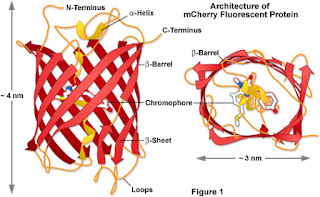Day 23, and 24
I split the cells which were present in the flask into two separate flasks for more examination next week on different experiments. After counting the cells, I found that there were
1.124 x 105/ml cells were found in the cell sample and
350K cells were required in each of the 6 plates.
Calculation for the volume of cells and media needed in each plate:
Calculation for the volume of cells and media needed in each plate:
350, 000 x 8 = 2, 800, 000. 2, 800, 000/1, 124, 000 = 2.45 ml
cells are required in the media ie. 2.5 ml cells. 3ml media is required in each plate, therefore 3ml x 8 = 24 ml media 1.124 x 105/ml cells were found in the cell sample and 350K cells were required in each of the 6 plates.
I plated the cells as follows:
- I placed 3ml media in each of the plates, incubated
them to allow them to settle for atleast 4 hours before the oxygen glucose deprivation.After 4 hours:- Harvest the No OGD and place it in its own epindorph tube. Leave
plate 3 in the incubator because that needs to be harvested after 24 hours.
Follow the same harvesting procedure as seen on pg. 47.
- place plates 2, 4, 5, 6, and 7 into the hood, aspirate off the media, wash with PBS and add deoxygenated aCSF (3ml) to the plates and place them in the hypoxia chamber.
- flood with nitrogen and then place in the incubator for 1.5 hours.
- place plates 2, 4, 5, 6, and 7 into the hood, aspirate off the media, wash with PBS and add deoxygenated aCSF (3ml) to the plates and place them in the hypoxia chamber.
- flood with nitrogen and then place in the incubator for 1.5 hours.
After 1.5 hours:- obtain plate 2 and harvest straight away, place it in its own
epindorph tube.
- leave plate 4 in the incubator ready for harvesting tomorrow.
- leave plate 4 in the incubator ready for harvesting tomorrow.
Administrating
the peptides to plates 5, 6 and 7:1μM of TAT, Myr-p110 and TAT-p110 is required, therefore a
1/10 dilution from the stock is needed.
For TAT and
Myr-p110:Stock concentration after the dilution: 1mM, and the desired
concentration is 1μM in the desired volume of 3ml in the plates. Therefore the
volume of peptide in 3ml media is:1000/1 = x/3. x = 3μl is needed in 3ml for both TAT and
Myr-p110.
For TAT-p110:Stock concentration after the dilution is 0.4mM ie. 1/10
from the 4mM stock of peptide. The desired concentration is 1μM in the desired
3ml in the plates. Therefore the volume of the peptide in 3ml media is: 1000/0.4 = 3/x. x = 7.5 μl.Place 3 ml in each of the plates that require it, while the
other plates require normal media for harvesting tomorrow.
- For the rest of the plates, pour off the media and bang it on the table with a tissue underneath. Place the plates upside down in the freezer for harvesting the next day.
- For the rest of the plates, pour off the media and bang it on the table with a tissue underneath. Place the plates upside down in the freezer for harvesting the next day.
The overall volumes:
After the cells had time to settle on the plates and become confluent enough to examine on, I harvested them. By using a Hepes and 1x Triton Buffer with PBS, I scrapped the cells off the plates and placed them in separate eppindorph tubes. The
amount of lysis buffer should be empirically determined for each cell type to
ensure efficient lysis as well as an optimal final concentration of protein in
the lysate. After this, the harvested cells needed to be incubated for 15 minutes and then be sonicated.
What is a sonicator?
A sonicator is a special device which sends high pitch frequency sound waves through the whole cell lysate solution to ensure that all of the cells are properly lysed and have their contents completely released into the surrounding solution. This therefore ensures that the maximum protein is in solution. After the solution is properly sonicated, they need to be taken to a giant centrifuge and be spun at 10, 000 for 5 minutes. Any of the excess cellular debris would have formed as a pellet at the bottom of the tube. I had to carefully transfer the valuable cell lysate to a different tube and then get ready for calculate the protein concentrations of my cells.
Order of harvesting:
I harvested plates 1 and 2 on the same day that I treated them: ie. 0 hours. I harvested the rest of the cells on the next day.
Calculating the protein concentrations:
I used the BioRad solution diluted in distilled water and diluted my lysate samples into a 96 well plate with references.
I had to make duplicates of each of the protein samples and place them on an excel spreadsheet to make a standard curve to calculate the protein concentration of each of my protein samples in 50ug.
Some of my samples had an especially low concentration of protein and therefore unfortunately could not be used in my western blot that I planned to do for LC3B. The others, however had an adequate amount of protein concentration in them and as a result I could get a suitable volume into the gel for running a blot. Whey!
The volumes of the samples in the wells and determination of the lanes for the blot:









Comments
Post a Comment